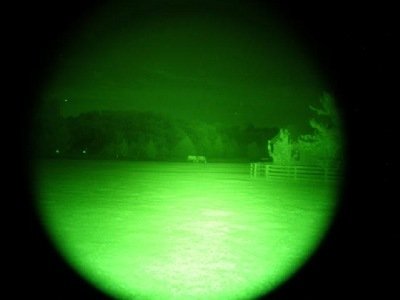Eric242
Flashlight Enthusiast
Thank you. I was at these pages before but the description only mentioned XP-G2 and nichia LEDs. I never checked the pulldown menu which has the IR option.
 Help Support Candle Power Flashlight Forum
Help Support Candle Power Flashlight Forum
Are there any infrared flashlights out there, except Fenix TK25IR ?
How do the EagTac & SporTac compare to the IR drop-in from Customlites.com? I think they're using the same LED.
Dan
Any Canon or Nikon can have the sensor replaced for one that allows shooting visible light as well as infrared what you have to be carefull with is your glass, many lenses cant capture infrared properly , you can also take "regular" pictures and run them thru photoshop to make infrared visible by chenging your settings on white balance and a few other things.
EagTac & SporTac has several models using the Osram 3.4w 850nm IR LED
(highest output IR LED AFAIK).
the IR output blows away any "3"-"5"w eBay/FT/DX lights.
Distance to horses is 225 yards, tree line is 1/4 mile.
(and note the light was pointed down to ground).

Cheers
Nikon did have a D810A; there was never a D800A. Canon has had a couple of astronomy models. Dedicated astronomy DSLRs don't actually reach much if at all into the near-IR region. Rather, their sensor filters have a more abrupt cutoff (rather than a gradual slope) at the longwave end of red to better catch the hydrogen alpha line at 656.28 nm which is still in the visible region.Just an FYI, I think you have your teminology a little mixed up. The sensors themselves are not replaced for increased sensitivity to IR. Most DLSRs have an IR "cut" filter in front of the sensor to reduce IR getting to the sensor. This IR filter is what is typically removed and either replaced with a "clear" piece of glass or sometimes nothing at all (depends on specific original design). This is because IR frequencies getting to the sensor can alter (fool) the sensor during the detection of visible light and yield unnatural colors to the human eye. For cameras that use the sensor for (phase detection) autofocus, IR frequencies cause a different focus calculation and might result in out of focus pictures for the visible frequencies. This is why if one looks at "old" manual focus lens for SLRs (not DSLRs), there are sometimes 2 focus indexes - one white (for normal film), one red (for IR film) to compensate for the longer IR wavelengths of IR film.
There are models of DSLRs designed for better IR capture - typically they will be called "Astronomy" models. I know Nikon used to make them, but I don't follow it as much anymore. I think there was a D800A (and maybe a D810A). DuckDuckGo.com is your friend.
There are also adapters available to allow night vision to be mounted to an (D)SLR or video equipment - that's the "green" scenes that are seen on TV for battle scenes - but this type of setup is very specialized and very expensive.